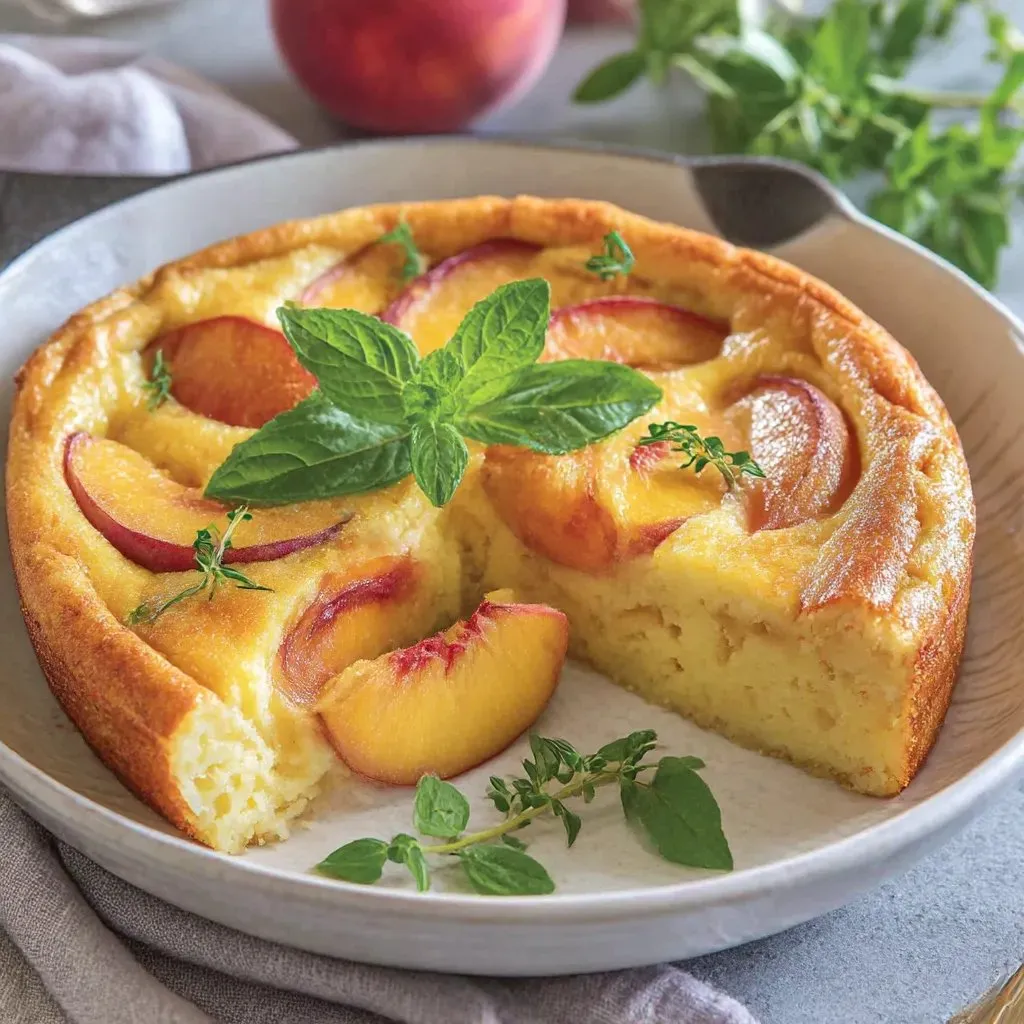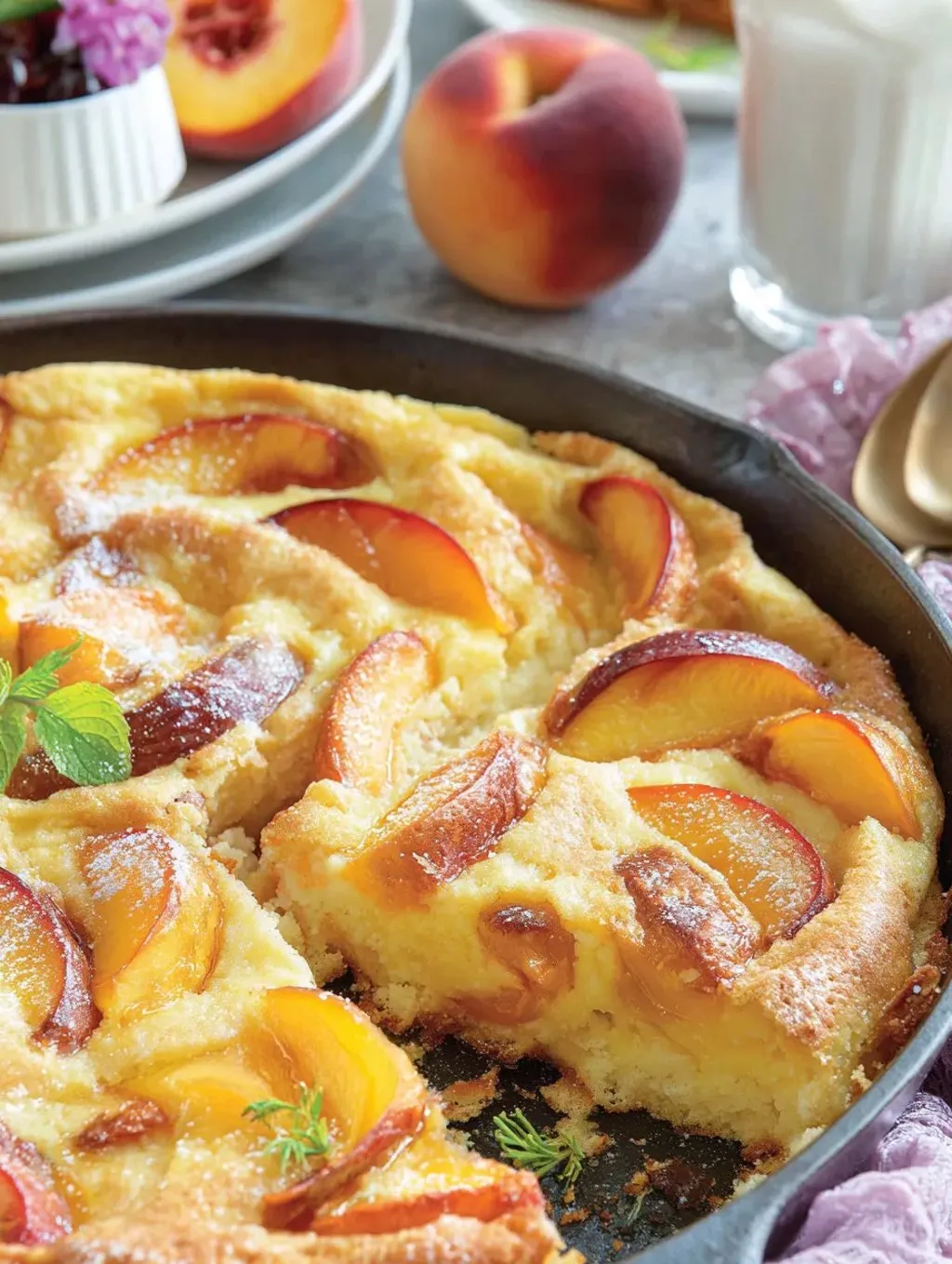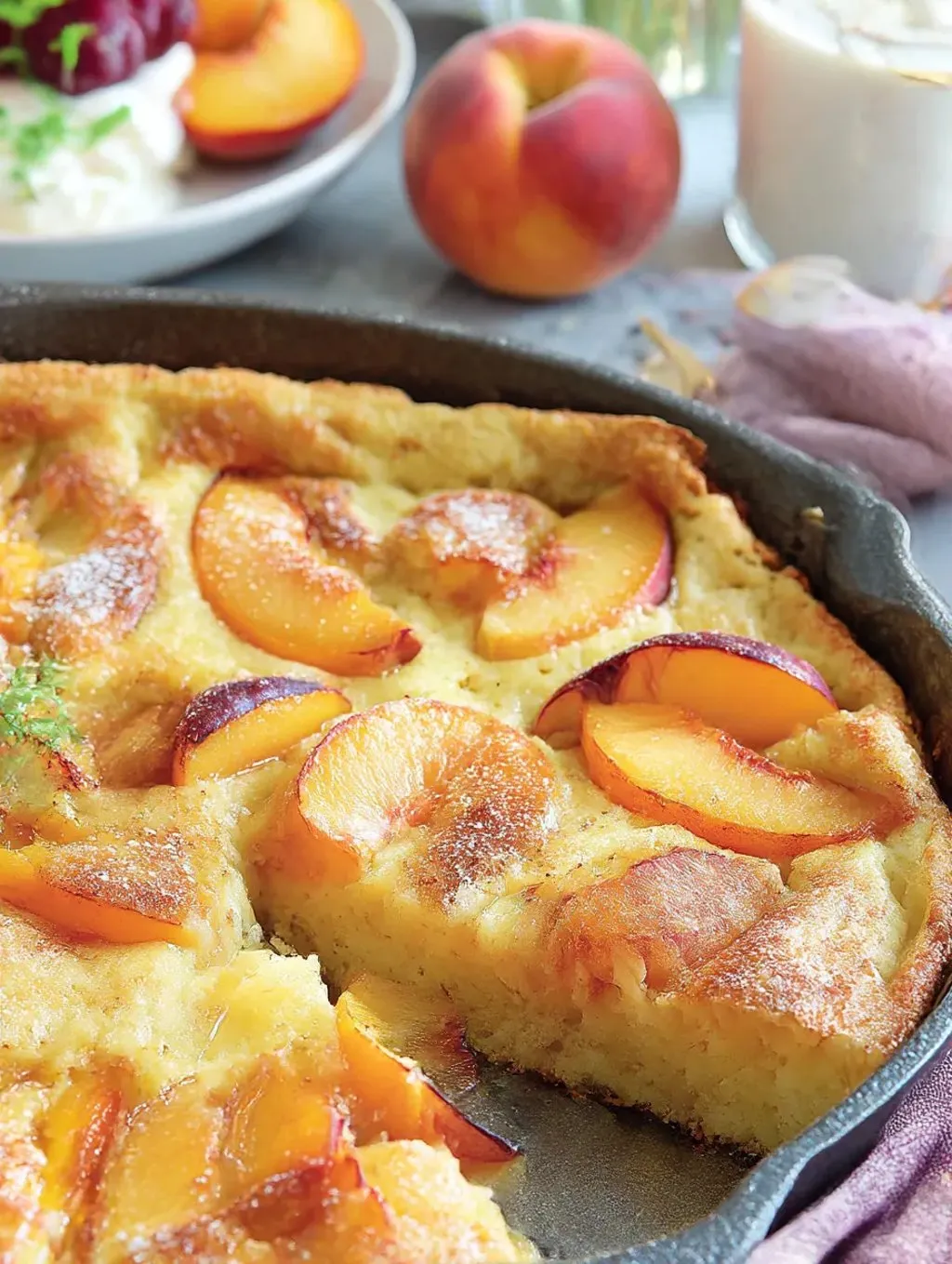 Pin
Pin
Peach Clafoutis is that light and custardy French dessert I pull out every summer when peaches are overflowing at the market. The simple batter envelops juicy peaches for a showstopper that looks far fancier than the effort required. This easy recipe is adapted from Julia Child’s classic book and has quickly become my go-to for backyard dinners or whenever I want to wow friends with something special yet unfussy.
I started making clafoutis in place of cobbler on hot July afternoons and now my husband asks for it as his birthday treat every summer. There is something about the silky texture with still-warm peaches that makes it irresistible.
Ingredients
- Whole milk: Fresh milk creates that classic delicate custard feel Try for full-fat for best richness
- Granulated sugar: Both sweetness and a gentle crisp on top Go for fine-grained for even mixing
- Large eggs: Vital for the custard base and setting the clafoutis Use the freshest you can get for richer flavor
- Vanilla extract: Rounds out the flavors and brings out the fruitiness Opt for pure vanilla if possible
- Kosher salt: Adds balance and enhances every layer A little goes a long way
- All-purpose flour: Offers gentle structure so the dessert sets without heaviness Sift for the smoothest texture
- Ripe peaches: The hero of the dish Choose peaches that yield slightly when pressed with a bit of fragrance
- Powdered sugar: For a delicate sweet finish Choose a fresh pack and use a fine sieve for cloudlike snow on top
- Butter: Used to coat the baking dish Prevents sticking and adds flavor Use real butter for best results
Step-by-Step Instructions
- Prep the Baking Dish:
- Butter a medium-sized baking dish generously Cover the entire surface and sides to prevent sticking and create a golden crust
- Blend the Batter:
- Combine milk sugar eggs vanilla salt and flour in a blender or bowl Blend or whisk thoroughly until the mixture is smooth and frothy It should look airy and pale for the silkiest results
- Set the Base Layer:
- Pour a thin quarter-inch layer of batter into your prepared dish and place it in a preheated oven at 350 degrees Let this bake for about five minutes until the layer is just barely set This makes a foundation so the peaches do not sink
- Add Peaches and Sugar:
- Carefully remove the dish from the oven Arrange your peach slices evenly over the set layer Try not to overlap too much for even baking Sprinkle the remaining sugar over the peaches for extra caramelization
- Finish with Batter:
- Pour the rest of the batter gently over the peaches covering everything evenly
- Bake the Clafoutis:
- Return to the oven and bake in the center rack for about fifty to fifty five minutes Watch for a beautifully puffed golden brown top and test with a thin knife or skewer in the middle It should come out clean or nearly so The surface will jiggle a little but that is perfect
- Cool and Finish:
- Let the clafoutis rest for a few minutes out of the oven The center will settle a bit Dust generously with powdered sugar right before serving
 Pin
Pin
Peaches will become meltingly soft and create pockets of syrupy goodness that remind me of summer picnics growing up My daughter loves to help dust the sugar and thinks it looks like edible snow
Storage Tips
Let the clafoutis cool to room temperature before covering and storing
Refrigerate leftovers in an airtight container and enjoy within two days for best flavor and texture
Serve cold straight from the fridge or gently rewarm individual servings in a low oven for about ten minutes
Ingredient Substitutions
Try apricots or plums when peaches are out of season for a tangier twist
Berries like blueberries or cherries also work beautifully but will make the batter more colorful
Dairy free milk such as almond can be used but the texture may not be quite as creamy
Serving Suggestions
Serve slightly warm dusted with powdered sugar
Add a dollop of whipped cream or a small scoop of vanilla ice cream for extra luxury
Pairs well with cold sparkling wine for an elegant finish to a summer meal
Cultural and Historical Context
Clafoutis originated in the Limousin region of France traditionally made with whole cherries
This peach version is inspired by Provence kitchens where peaches ripen earlier than cherries
Serving clafoutis warm is a French tradition that brings out its rustic charm
 Pin
Pin
Recipe FAQs
- → What kind of peaches work best for clafoutis?
Ripe, firm peaches hold their shape and deliver the sweetest flavor. Avoid overly soft or underripe fruit for best results.
- → Can I substitute other fruits for peaches?
Yes, cherries, plums, apricots, or berries can be used. Adjust sugar slightly based on the fruit's sweetness.
- → How do I know when the clafoutis is done baking?
It's ready when puffed, golden, and a knife or tester inserted in the center comes out clean.
- → Should clafoutis be served hot or cold?
It's best served slightly warm, though it can also be enjoyed at room temperature.
- → How long does clafoutis keep after baking?
Store covered in the refrigerator for up to two days. Briefly rewarm for the best texture before serving.
- → Is it necessary to peel the peaches?
Peeling is optional. If the skin is tender, leave it on for added color and nutrients.
